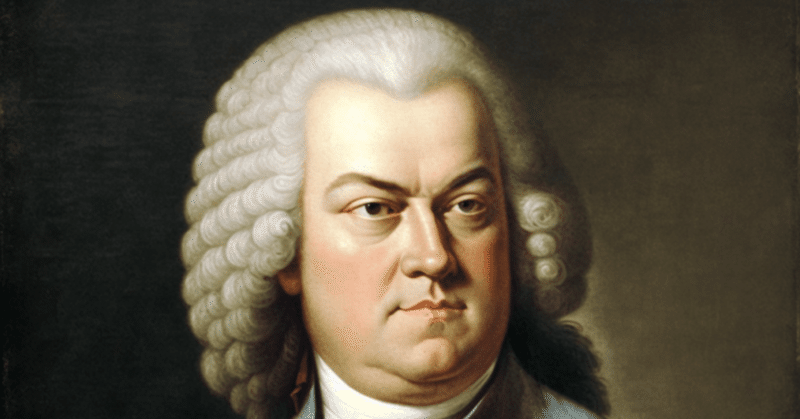
バッハの「無伴奏ソナタとパルティータ」について
バッハの「無伴奏ソナタとパルティータ」とは、ヴァイオリンのための6曲の独奏曲です。
この作品は、1720年頃にバッハが作曲しました。ソナタ3曲とパルティータ3曲からなり、それぞれが4つから5つの楽章で構成されています。
1本のヴァイオリンで和声的・立体的な音楽世界を表出した傑作として、同楽器のバイブルとも称されています。
この作品の中でも、特に有名なのが、パルティータ第2番の最終楽章である「シャコンヌ」です。
この楽章は、3拍子の舞曲の一種で、同じ低音進行(オスティナート)による変奏曲の形式としてバロック時代に盛んに用いられました。
バッハの「シャコンヌ」は、ニ短調の4小節のオスティナートを基に、64の変奏からなります。
変奏は、3つの部分に分かれており、それぞれが独自の性格を持ちます。第1部は、悲しみや苦しみを表現する重厚な音楽です。
第2部は、変ロ長調に転じて、希望や慰めを示す明るい音楽です。第3部は、再びニ短調に戻り、第1部の主題を変化させながら、激しさや熱情を高めていきます。
この楽章は、多くの演奏家や作曲家に影響を与えました。例えば、ブラームスは、この曲をピアノ左手のために編曲し、その難易度と美しさについて絶賛しました。
また、メンデルスゾーンやシューマンも、この曲をピアノ伴奏付きに編曲しました。
現代最高のヴァイオリニストの一人、ギドン・クレーメルは、バッハの「無伴奏ソナタとパルティータ」を何度も録音しており、その解釈は時代や自身の成熟とともに変化しています。
クレーメルが初めて録音したのは、1979年でした。
このときのクレーメルは、若々しく繊細な音色と、シャープで正確なテクニックが際立っています。
また、クレーメルは、バッハの原曲に忠実でありながら、自由で創造的なアプローチをとっています。
クレーメルが再録音したのは、2001年と2002年でした。
このときのクレーメルは、30代前半のときとは対照的に、作品に真摯に向き合い、内省的で深い精神性を感じさせる演奏をしています。
クレーメル自身は、この再録音について、以下のように語っています。
「私は、この作品に対する自分の理解が深まったと感じています。私は、この作品の美しさや複雑さをより多くの人に伝えたいと思っています。私は、この作品を演奏することで、自分自身の音楽的なアイデンティティを見つけることができました。」
クレーメルのバッハの演奏には、常に新鮮さと驚きがあります。私も、クレーメルの演奏を聴くことで、音楽そのものを味わう気になります。
About Bach's "Solo Sonatas and Partitas"
Bach's Solo Sonatas and Partitas are six solo pieces for violin.
This work was composed by Bach around 1720. It consists of three sonatas and three partitas, each consisting of four to five movements.
It is a masterpiece that expresses a harmonic, three-dimensional musical world with a single violin, and is also called the bible of the instrument.
The most famous of these works is the Chaconne, the final movement of Partita No. 2.
This movement is a type of dance in triple time, and was widely used during the Baroque period as a form of variation based on the same bass progression (ostinato).
Bach's Chaconne consists of 64 variations based on a four-bar ostinato in D minor.
The variations are divided into three parts, each with its own character. The first part is heavy music that expresses sadness and suffering.
The second part changes to B-flat major and is bright music that expresses hope and comfort. The third part returns to D minor and changes the theme of the first part, increasing the intensity and passion.
This movement influenced many performers and composers. For example, Brahms arranged this piece for the left hand of the piano and praised its difficulty and beauty.
Mendelssohn and Schumann also arranged this piece with piano accompaniment.
Gidon Kremer, one of the greatest violinists of our time, has recorded Bach's Solo Sonatas and Partitas many times, his interpretations changing with his time and his own maturation.
Kremer first recorded in 1979.
Kremer at this time stands out for his youthful, delicate tone and sharp, precise technique.
Kremer also takes a free and creative approach while remaining faithful to Bach's original compositions.
Kremer re-recorded it in 2001 and 2002.
At this time, in contrast to when he was in his early 30s, Kremer is seriously approaching his work, and his performances convey a sense of introspection and deep spirituality.
Kremer himself says the following about this re-recording:
“I feel that my understanding of this work has deepened. I want to convey the beauty and complexity of this work to as many people as possible. I was able to find my own musical identity."
Kremer's Bach performances are always fresh and surprising. Listening to Kremer's performance also makes me want to enjoy the music itself.

よろしければサポートお願いします! いただいたサポートはクリエイターとしての活動費に使わせていただきます!
